5 Best Binoculars for Astronomy in 2024
When you think about an amateur astronomer, you probably imagine someone observing the universe using a telescope in their backyard or atop a mountain somewhere. But telescopes aren’t the only tool available to amateur astronomers—a pair of decent binoculars can make an excellent alternative.
A telescope is an undoubtedly powerful instrument for astronomy observation, but they’re big, bulky, and often come with a hefty price tag attached. Binoculars, on the other hand, are lightweight, portable, and generally cheaper than telescopes. Similar to picking out a telescope, there are some crucial things you need to understand first before making a purchase.
What specs do you need to look for? What price-ranges offer the best quality? In this article, we’ll be detailing everything you need to know about astronomy binoculars—their advantages, disadvantages, essential specs, and pricing ranges. To top it all off, we’ll end with a brief breakdown of some of the best binoculars for astronomy on the market today.
We Recommend
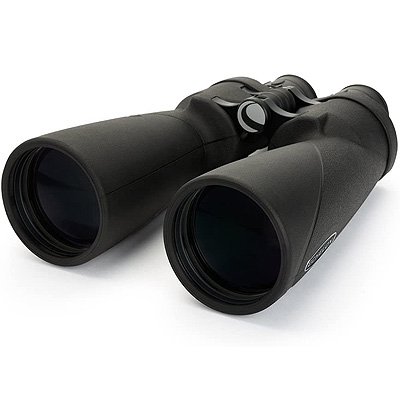
Best for stargazing
Celestron
Echelon 20×70
Best budget option
Celestron
SkyMaster 25X100
Best image stabilized
Canon 18×50
Image Stabilization
Binoculars vs. telescopes: Which is better for viewing celestial objects?
This question has a rather obvious answer—using a telescope to view the cosmos will be better than binoculars a majority of the time. However, there are times when having a telescope will make things considerably more difficult.
Telescopes are quite heavy and bulky to carry around, while binoculars are lightweight and easy to bring with you practically anywhere. So, for instance, if you’re planning on hiking a steep mountain for a better view of the universe, an excellent pair of binoculars will be much easier to carry. You will be limited by the power of your particular binoculars, but you’ll still get an exceptional viewing experience.
Binoculars and telescopes both have their distinct advantages, but binoculars are an especially great option for brand-new amateur astronomers. Not only do they typically cost less than a starter telescope, but many of them are also powerful enough to see quite far into our delightful little solar system (including some planets), though you won’t be able to capture the same amount of detail from them as a telescope.
What specs are needed for astronomy viewing?
When choosing a pair of astronomy binoculars, there are two essential specs to pay attention to: total magnification power and the lens diameter. Magnification controls how wide or narrow your viewing experience will be—a lower magnification indicates a wider field of view, while a higher magnification offers a more narrow but focused view. The size of the lens diameter determines how much light is gathered by the binoculars, with larger sizes offering crisper views.
For a broader and more general view of the cosmos (many consider a wider view a more immersive experience), you’ll want a pair of binoculars with a maximum magnification of 10x and a lens diameter of around 50mm. If you’re looking for something specific and would prefer to see greater detail, aim for higher magnification. Keep in mind that larger magnifications and lens diameters inevitably lead to a heavier pair of binoculars, which can sort of ruin the portability aspect.
Related: 5 Best Star Projectors in 2020 [for Home Planetarium]
What can you see with astronomy binoculars?
A decent pair of astronomy binoculars (with 10x magnification) will provide a suitable view of many objects in space, including the Moon, satellites, planets, and even some distant star clusters and galaxies. Here are some specific things you can see relatively well with binoculars (from the northern hemisphere):
- The Moon
- International Space Station
- Orion Nebula
- The Milky Way
Unfortunately, compared to a telescope, most objects will be visible, but you won’t be able to get an up-close look or make out any noticeable detail. Saturn is a commonly viewed planet because of it’s beautiful ring system, but sadly the rings are not prominent with most binoculars. You will be able to view a variety of deep sky objects and make out planets and their respective moons.
Related: 5 Best Telescopes for Viewing Planets in 2020 [Saturn, Mars, Jupiter, etc.]
Astronomy Binocular Price Timeline
Binocular pricing can be broken down into different groups based on pricing. Similar to how a telescope’s price depends on the quality of the optics, so do binoculars. Below we’ve listed six categories of pricing, ranging from starter options at $100 or less up to professional-grade binoculars at $1,000+.
Each category details what specs you can expect to get for the price. Most of the price ranges below generally offer the same magnifications and apertures, but they do change in the quality and provide more features as they rise in price (i.e., a $500 pair of 10x50mm binoculars will typically offer better viewing than a $200 pair with the same specs).
Starter Binoculars – <$100 – Any binoculars under the $100 range are considered starter or beginner binoculars. These typically aren’t the most powerful or sturdy binoculars (with some exceptions). So, if you can, it’s best to spend a little extra and grab a nicer pair.
Bargain: $100-$150 – Binoculars within the price range of $100 to $150 typically provide a magnification power between 10x and 20x with a lens diameter between 40-50mm. Binoculars at these prices are best if you’re only planning on using them occasionally.
Budget: $150-250 – If you’re on a tight budget but still want to spend some time stargazing, you’ll want to spend around at least $150 for a good pair of binoculars. Magnification powers typically range from 10x to 25x in this range, with lens diameters usually around 80mm.
Mid-range: $250-$700 – Right around $250 is where binocular brands begin to offer a noticeable increase in optics quality and some better capability. We recommend picking up a mid-range pair of binoculars if you’re at least a semi-serious beginner or intermediate astronomer.
Advanced: $700-$1,300 – If you’re a beginner, you most likely won’t need binoculars over $700. Binoculars between $700 and $1,300 are more for avid enthusiasts who intend to spend a great deal of time stargazing from multiple difficult-to-reach locations.
Professional: $1,300+ – Binoculars over $1,300 are specifically designed for professional use, either by astrophotographers or advanced users without a restrictive budget. You can expect typical magnification and apertures in this range, but professional-grade binoculars often come with extra features, such as image stabilizers, optics anti-reflection coating, and more.
A Word About Tripods
Tripods are essential for most forms of photography and universe observation, but do you need one while using binoculars? This is really dependent upon the sophistication of your binoculars and how you intend to use them (what aperture you’ll need).
Smaller binoculars, with apertures under 70mm, don’t really require a tripod, especially if you’re only going to be viewing the night sky with them for brief periods. More expensive binoculars, such as those in the $1,000+ range, will often offer image stabilization, which lessens the need for a tripod. However, both small and large professional-grade binoculars will benefit from the use of a tripod. Tripods allow much easier extended viewing sessions, so if you’re trying to spend time making out details on the Moon, you’ll want a tripod.
Picking out a tripod depends on where you intend to bring them, the size of your aperture, and what you’ll be viewing. However, there are a lot of great tripods on the market, and many of them are suitable for most types of binoculars and terrain layouts. The primary exception to this is if your binoculars have an aperture over 100mm, as the larger size requires greater stamina to hold for extended periods. If you’re planning on short but immersive observations, you probably won’t need a tripod. If you intend to spend a few hours locating different things in the night sky, you’ll definitely want a tripod!
Related: 5 Best Tripods for Binoculars (Astronomy) in 2020
How to Choose the Right Astronomy Binoculars
Aside from magnification and aperture, there are a few other attributes and specs worth looking into when choosing the right astronomy binoculars.
- Aperture – as previously mentioned, aperture is the power of your binocular’s lens. We recommend an aperture of at least 50mm.
- Field of View – Field of view (FOV) is simply the total area observable through your binoculars. A FOV of around 325 feet per 1,000 yards is recommended for an optimum viewing experience.
- Prism – Binoculars use a prism to manipulate light and increase magnification power. Most binoculars use a Porro prism, which is the best at offering crisp views.
- Lens coating – The best pairs of astro binoculars use a multi-coat on the lens, allowing enhanced observation by maximizing light capture.
- Exit pupil – The exit pupil is where the light comes out after being gathered by the aperture and lens. The exit pupil should be the same size as your pupils in low-light, between 5mm and 9mm.
- Focus & eyepiece adjustment – Having a focused image of whatever you’re looking at is the most essential part of binocular observation. All binoculars have a basic focus knob, which, in most cases, is all you’ll need. Higher-end binoculars offer automatic stabilizers and other advanced features.
- Size – Many of the higher-aperture binoculars are considerably large and bulky. Size is based on preference. If you’re okay with a bit less portability and prefer crisper views of the cosmos, choose a larger pair. If you’re looking for maximum portability, select one with a lower aperture.
Best Binoculars for Astronomy
1. Orion 09327 Giant View 15×70 Astronomy Binoculars
The Orion 09327 Giant View 15×70 Astronomy Binoculars offer a pleasant balance of portability, power, and price—making them an excellent choice for new astronomers or intermediates.
They have a 15x magnification with a 70mm objective lens, providing clear (but still distant) views of many nebulae and star clusters, and some (limited) views of distant planets.
Instead of using a typical central eyepiece adjustment knob, the Orion 09327 binoculars use individual eyepieces, allowing enhanced focusing capability.
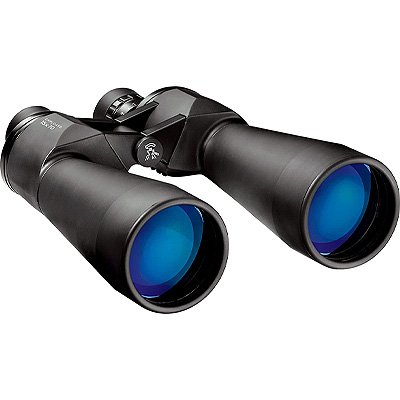
The optics are multi-coated, which, as we mentioned earlier, provide maximum light transmission. The primary drawback to this pair of binoculars is its weight. So, grab a tripod as well if you intend to use it for extended periods.
Additionally, to attach to a tripod, you’ll need an L-adapter or binocular mount, which are not included. The binoculars come with an aluminum case, dust caps, and some other accessories.
Check the price of Orion 09327 Giant View 15×70 Astronomy Binoculars here
Matching tripod: Orion Tritech II Field Tripod
What we liked
- Great for beginners
- Decent viewing capabilities
- Individual focusers
- Multi-coated optics
- Wide FOV
- Comes with sturdy aluminum case
What we didn’t like
- A little heavy
- Need an adapter for tripod use
Aperture: 70mm
Magnification: 15x
Field of view: 210 ft.
Eye relief: 18mm
Weight: 4 lbs.
What can you see with it: Deep-sky objects
2. Celestron 20×80 SkyMaster Pro Astronomy Binoculars
Celestron’s 20×80 SkyMaster Pro Astronomy Binoculars are another great beginner option but with a higher aperture and a bit better magnification power.
The binoculars have an 80mm aperture with 20x magnification.
The field of view is a bit lower than our previous entry, but you can clearly view many different planets, including Jupiter.
The binoculars feature an aluminum and polycarbonate housing “armor” around them, making them highly resistant to weather and waterproof.
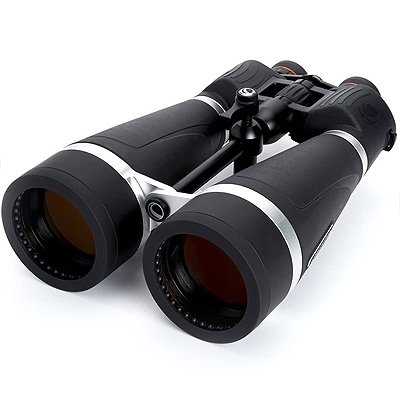
There’s an included detachable reflex sight mount on top, allowing the attachment of a finderscope.
They come with an objective lens cap, rain guard, neck strap, lens cloth, and instruction manual. At 5 lbs, these are a bit on the heavy end, so pick up a tripod for any extended use occasions.
Check the price of Celestron 20×80 SkyMaster Pro Astronomy Binoculars here
Matching tripod: Orion Paragon-Plus XHD
What we liked
- Great for beginners & intermediate users
- Good viewing capabilities
- Individual focusers
- Multi-coated optics
- Waterproof
- Sturdy build
- Comes with case
What we didn’t like
- Heavy
- Low field of view (FOV)
Aperture: 80mm
Magnification: 15x
Field of view: 168 ft.
Eye relief: 15.5mm
Weight: 5 lbs.
What can you see with it: Planets/deep-sky objects
3. Celestron SkyMaster 25X100 Astro Binoculars
The Celestron SkyMaster 25×100 Astro Binoculars are a great budget option for intermediate to more advanced amateur astronomers.
With a 100mm aperture, they are Celestron’s “largest aperture available in a binocular,” capable of viewing the Moon with detail and distinguishing between Jupiter and its moons.
The lens is high-quality, multi-coated, and offers up to 25x magnification.
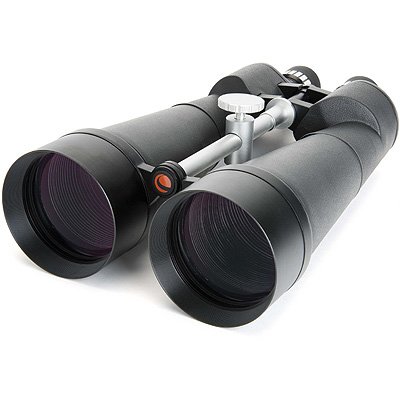
These binoculars are heavier than the last two pairs, so having a tripod with these is practically considered a prerequisite. The binoculars come with a lens cap, carrying case, neck strap, lens cloth, and instruction manual.
Check the price of Celestron SkyMaster 25X100 Astro Binoculars here
Matching tripod: Orion Tritech II Field Tripod
What we liked
- Great for intermediate users
- Great viewing capabilities
- Multi-coated optics
- Water-resistant
- Durable body design
- Comes with carrying case and built-in adapter for a tripod
What we didn’t like
- Low field of view (FOV)
Aperture: 100mm
Magnification: 25x
Field of view: 156 ft.
Eye relief: 15mm
Weight: 8.75 lbs.
What can you see with it: Planets/deep-sky objects
4. Celestron 71454 Echelon 20×70 Binoculars
The Celestron 71454 Echelon 20×70 Binoculars are exceptionally high-quality and perfect for advanced astronomers as a portable alternative.
With a 3.5mm exit pupil, they excel at providing clear observation in low-light conditions.
The 70mm lens, which is multi-coated in observatory-grade coatings, is capable of viewing deep-sky objects in significant detail.
The field of view is only 157 feet, but this does not affect the viewing experience.

The armor around the binoculars is extremely durable, made specifically for use in rough conditions. They are entirely waterproof and nitrogen-purged, which prevents fogging.
Despite their power, they are only a little on the heavy side. The binoculars come with a sturdy protective case for storage and portability, an objective lens cap, rain guard, neck strap, lens cloth, and instruction manual.
Check the price of Celestron 71454 Echelon 20×70 Binoculars here
Matching tripod: Orion Paragon-Plus XHD
What we liked
- An excellent alternative for advanced users
- Excellent and crisp observing
- Multi-coated optics
- Waterproof
- Nitrogen-purged (prevents lens fogging)
- Durable body design
- Comes with carrying case and built-in adapter for a tripod
What we didn’t like
- A little heavy
- Higher price
Aperture: 70mm
Magnification: 20x
Field of view: 157 ft.
Eye relief: 19.5mm
Weight: 4 lbs.
What can you see with it: Deep-sky objects
5. Canon 18×50 Image Stabilization Binoculars
Canon’s 18×50 Image Stabilization All-Weather Binoculars are some of the best binoculars available today.
They feature a 50mm lens with multi-coating for max light transmission.
The shining feature of these binoculars is its sophisticated image stabilization capability.
The image stabilization, which was first designed by Canon for video recorders and broadcasting, is capable of detecting even the most minute vibrations and correcting them.
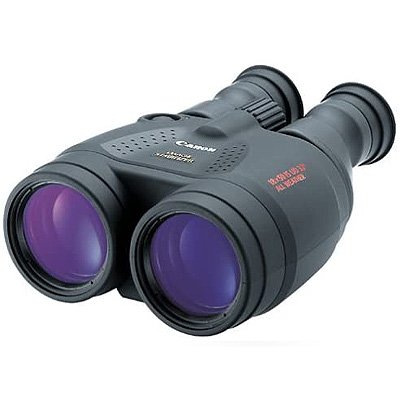
The image stabilizer means you don’t necessarily need a tripod. Aside from its crowning feature, the binoculars offer a variety of other features, including a rugged, all-weather entirely waterproof armor casing. It comes with a case, neck strap, and batteries (for the stabilizer).
Check the price of Canon 18×50 Image Stabilization Binoculars here
Matching tripod: Orion Tritech II Field Tripod
What we liked
- Excellent for both beginners and advanced users
- Excellent observation capability
- Offers a wide field of view
- Sophisticated image stabilization technology
- Multi-coated optics
- Waterproof
- Nitrogen-purged (prevents lens fogging)
- Durable body design
- Comes with carrying case and built-in adapter for a tripod
What we didn’t like
- A little bulky
- Higher price
Aperture: 50mm
Magnification: 18x
Field of view: 194.3 ft.
Eye relief: 15mm
Weight: 2.6 lbs.
What can you see with it: Deep-sky objects
Also read:

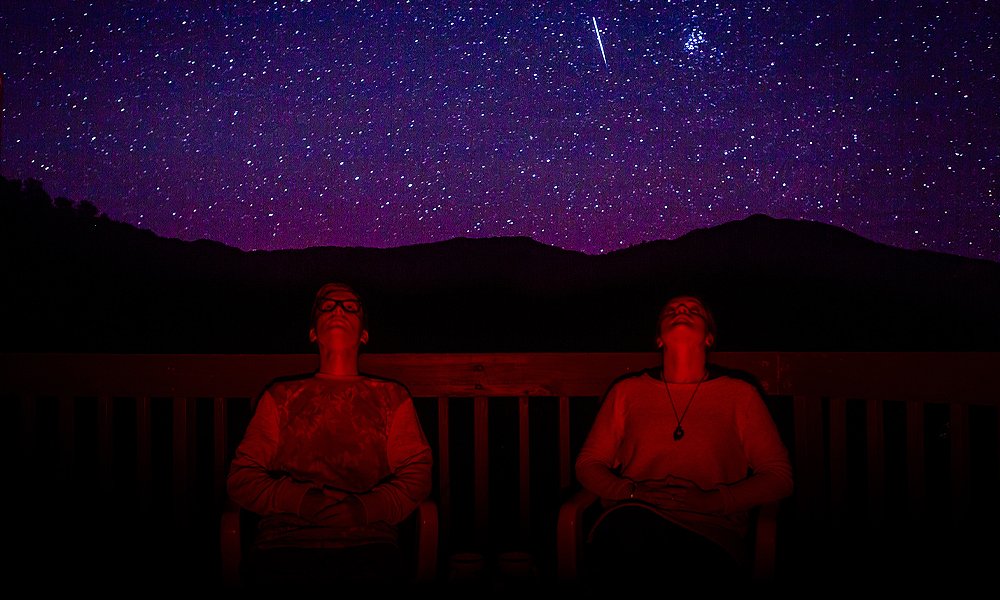
![5 Best Astronomy Observing Chairs in 2024 [Ergonomic & Comfortable]](https://www.planetguide.net/wp-content/uploads/2019/12/astronomy-chair-768x461.jpg)
![5 Best Telescope Eyepieces in 2024 [+Beginner’s Guide]](https://www.planetguide.net/wp-content/uploads/2019/12/telescope-eyepieces-768x461.jpg)
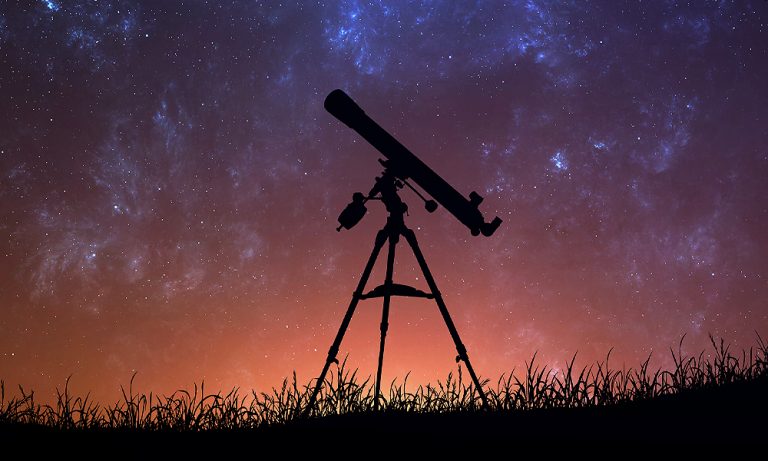
![5 Best Star Projectors in 2024 [for Home Planetarium]](https://www.planetguide.net/wp-content/uploads/2019/12/graham-holtshausen-fUnfEz3VLv4-unsplash-768x513.jpg)